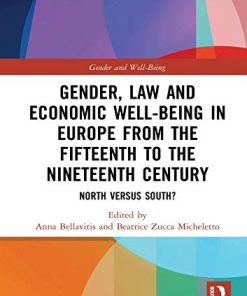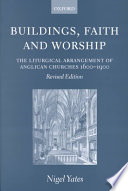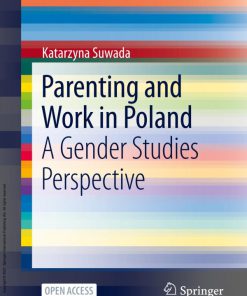Gender and Divorce in Europe 1600 1900 A Praxeological Perspective 1st Edition by Andrea Griesebner, Evdoxios Doxiadis ISBN 1003334555 9781003334552
$50.00 Original price was: $50.00.$25.00Current price is: $25.00.
Gender and Divorce in Europe 1600 1900 A Praxeological Perspective 1st Edition by Andrea Griesebner, Evdoxios Doxiadis – Ebook PDF Instant Download/Delivery: 1003334555 ,9781003334552
Full download Gender and Divorce in Europe 1600 1900 A Praxeological Perspective 1st Edition after payment

Product details:
ISBN 10: 1003334555
ISBN 13: 9781003334552
Author: Andrea Griesebner, Evdoxios Doxiadis
Gender and Divorce in Europe 1600 1900 A Praxeological Perspective 1st Edition Table of contents:
1 Introduction
1.1 The Divorce of Marriage
1.2 Regulation of the Divorce Consequences
1.3 Making a Living
1.4 Well-Being
1.5 Organization of the Volume
1.6 Conclusions
References
2 Women and Work
2.1 The Work Repertoires of Ever-Married Women
2.2 The Status as Wife
2.3 Conclusions
Archival Sources
Notes
References
Part I Divorce from Bed and Board
3 Separated Beds – Interwoven Property: Separation and Divorce in the Habsburg Monarchy between the mid-16th and the mid-19th Centuries
3.1 Ecclesiastical Jurisdiction
3.2 Separation and Divorce Grounds
3.3 Regulation of the Consequences of Separation and Divorce
3.4 Marriage Property Regime
3.5 Secular Jurisdiction
3.6 Matrimonial Property and Inheritance Law
3.7 Marriage Contracts and Divorce Settlements
3.8 Conclusions
Archival Sources
Notes
References
4 Separating Persons and Property in Early Modern English Marriages
4.1 Coverture and Continuities in Divorce Law through the Reformation
4.2 Support for a Separated Wife during Her Husband’s Life
4.3 Support for a Separated Wife after Her Husband’s Death
4.4 Case Study: The Two “Ladies Powys”
4.5 Conclusions
Archival Sources
The National Archives, Kew
Parliamentary Archives
Notes
References
5 Divorce in Early Modern Bilbao
5.1 Divorce Cases in Bilbao
5.2 Witnesses and the Parish Priest
5.3 Types of Marriage
5.4 Matrimonial Property Regime and Marriage Contract
5.5 Families
5.6 The End of the Process
5.7 Conclusions
Archival Sources
Notes
References
6 Judicial Separation and Its Material Effects in France during the 16th and 17th Centuries
6.1 Forms of Marriage Exchanges and the Judicial Interruption or Transformation of These Exchanges
6.2 Various Ways to Leave One’s Husband or Wife
6.3 The Effects of Separation on the Community of Property and the Dowry
6.4 The Case of the Separation: Pommereu v. Bernard
6.5 The Actors in the Marital Dispute and the Internal and External Context of Their Lineage
6.6 The Actors’ Strategies in Trial Settlements and Social Situations
6.7 Conclusions
Archival Sources
Notes
References
7 Interwoven Ecclesiastical and Civil Divorce Trials: A Venetian Case Study (1785)
7.1 Exceptional Sources
7.2 A Complex Family and Financial Context: Aristocratic Discipline and Breaking Points
7.3 A Particularly (In)tense Legal Context: Jurisdictionalism v. Curialism
7.4 The Separation Procedure According to the 1782 Decree: Proceedings and Gender
7.5 The Wife’s Strategy: Voice, Virtue, and Wardrobe
7.6 The Husband’s Defense: Paper, Proceedings, and Progeniture
7.7 Conclusions
Archival Sources
Notes
References
8 Divorce during the Concordat at the Marriage Courts of Prague and Trent (1857–1868)
8.1 The Concordat and Marriage Regulations
8.2 Data from the Archival Collections of Trent and Prague
8.3 Case Studies in Prague and Trent
8.4 1868: The End of the Ecclesiastical Marriage Courts of Trent and Prague?
8.5 Conclusions
Archival Sources
Notes
References
9 Material Matters: Dissolution of Economic Ties in the Context of Divorces in Rural Lower Austria in the 1920s and 1930s
9.1 Juliane and Josef Grabler (1919–1935)
9.2 Marie and Johann Himmelbauer (1887–1922)
9.3 Barbara and Karl Fischer (1911–1920)
9.4 Katharina and Adolf Gassner (1914–1919)
9.5 Theresia and Martin Wimmer (1934–1937)
9.6 Conclusions
Archival Sources
Notes
References
Part II Divorce with Dissolution of the Marriage
10 Enduring Animosity: Negotiating Post-Separation Conflicts in the German County of Lippe (17th and 18th Centuries)
10.1 Legal Contexts
10.2 Post-separation Conflicts in the Mirror of Legal Practice: The Case of Anna Dorothea Küster v. Johann Adolf Wippermann (1705–1706)
10.3 Custody of the Children
10.4 Maintenance and Property
10.5 Life after Separation
10.6 Conclusions
Archival Sources
Notes
References
11 The Indistinct Line between Marriage and Divorce: The Ambiguous Nature of Marital Status in the 17th-Century Ottoman Empire
11.1 Married or Divorced?: Marriage in absentia
11.2 Ambiguity of the Marital Status: Use of Witnesses, Absence of Marriage Contracts
11.3 Ambiguity Due to Conditional Divorce
11.4 Ambiguity of the Divorce Type: Talâk or Hul’?
11.5 Conclusions
Archival Sources
Notes
References
12 The Influence of Islamic Law on Greek Orthodox Divorce under Ottoman Rule
12.1 The Orthodox and Islamic Divorces
12.2 Orthodox Christians in Islamic Courts
12.3 The Orthodox Church Reforms
12.4 Conclusions
Notes
References
13 The Economy of Islamic Divorce in Habsburg Bosnia and Herzegovina (1878–1918)
13.1 Islamic Legal Architecture under Habsburg Rule
13.2 Divorce as an Economic Claim
13.3 Disputing Money and Goods
13.4 Regulating Divorce and Poverty
13.5 Enforcing an Economic Regime
13.6 Conclusions
Archival Sources
Notes
References
14 New Possibilities – New Practices? Divorces of Jewish Couples under the Purview of the Austrian Civil Code in the 19th Century: Provisions, Agreements, and Property Issues
14.1 Legal Provisions
14.2 The Attractiveness of the New Model of a “Divorce from Bed and Board” for Jewish Wives and Husbands
14.3 The Dual Nature of Consensuality within Jewish Marriage Law and the Attempted Practices of Circumvention
14.4 Provisions in Marriage Contracts
14.5 Mutual Negotiation of the Consent to Dissolve Marriages
14.6 Conclusions
Archival Sources
Notes
References
People also search for Gender and Divorce in Europe 1600 1900 A Praxeological Perspective 1st Edition:
gender roles in 17th century europe
divorce in the 16th century
gender roles in 19th century europe
european gender roles 16th century
divorce in 1700s america
Tags: Andrea Griesebner, Evdoxios Doxiadis, Gender, Europe, Praxeological Perspective
You may also like…
Politics & Philosophy - Anthropology
Buildings, Faith, and Worship: The Liturgical Arrangement of Anglican Churches 1600-1900 Yates
Technique - Construction: Ventilation and Air Conditioning
Engineering - Energy & Power Resources
Uncategorized
Uncategorized
Diabetes Drug Notes 1st Edition Miles Fisher Editor Gerard A Mckay Editor Andrea Llano Editor
Uncategorized
Uncategorized











